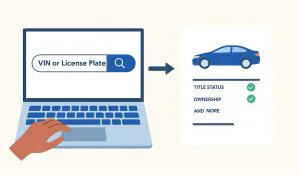How to Find the Paint Code by VIN
Find OEM paint code from VIN in seconds.

Whether you’re touching up paint scratches, repainting a body panel, or customizing your vehicle, finding the correct paint code is crucial for achieving a seamless finish. Sometimes, perhaps you’ve lost your manufacturer stickers, and the manuals are not in sight. But don’t worry, you can still find the paint code with your VIN. We’ll walk you through how to do that in this post.
Quick Guide
Can you read the paint code directly from a VIN?
Unfortunately, no.
Every vehicle today has its unique ID, and it’s called the VIN, or Vehicle Identification Number. This 17-digit code tells you a lot about the car, like its manufacturer, model, year of production, and other details, but it doesn’t directly include the paint code. To find that, you’ll need to use a VIN decoder and do a little searching.
Before we begin…
It’s best to have your car’s VIN handy before you start searching. If you’re not sure where to find it, check out our guide. It’s also helpful to know the year, make, and model of your vehicle, and you can look that up with this tool.
Just a heads-up: methods in this post are for finding the original factory paint color. If your car has been repainted a non-factory color, you’ll likely need to visit a paint shop for a color match.
1. Check auto parts websites
Many online auto parts stores let you search by VIN to find the right parts for your car. As a bonus, sometimes the search results will include your car’s original factory paint code.
Sites like PartSouq, which sells parts for brands like Toyota, Lexus, and Volkswagen, offer this feature. Enter your VIN, and if you’re lucky, the paint code will be listed along with the part information.
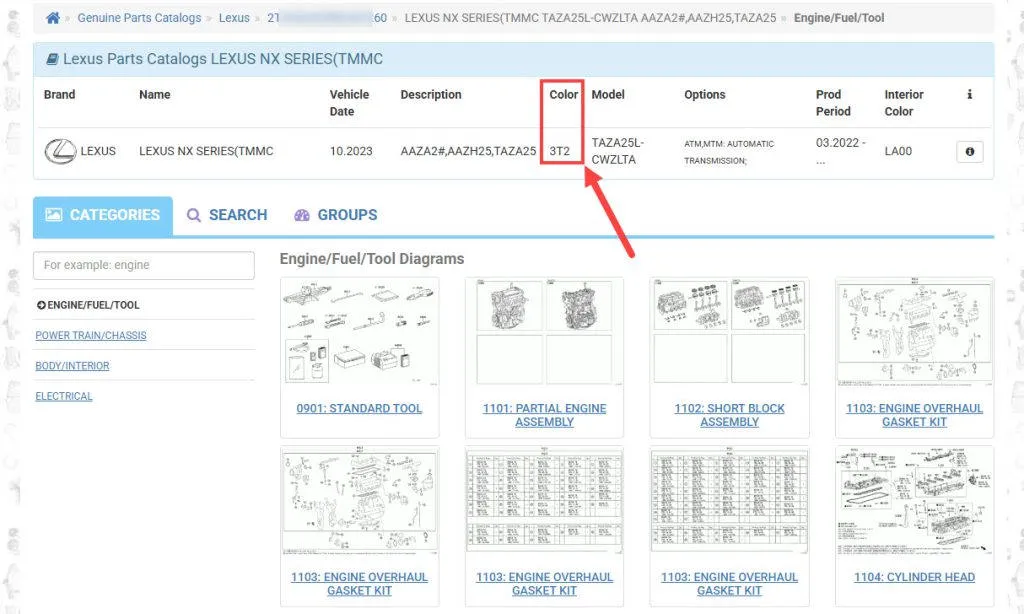
But like many parts shops, PartSouq only stocks parts for specific brands. If your car brand is not covered, try searching online for “[your car brand] auto parts”. Many retailers’ websites allow you to search by VIN or year/make/model, and you might find the paint code within the vehicle details.
Even if you don’t see the code right away, you can often start the process of buying touch-up paint, and the site will likely suggest the correct one based on your car’s information, telling you what the paint code is.
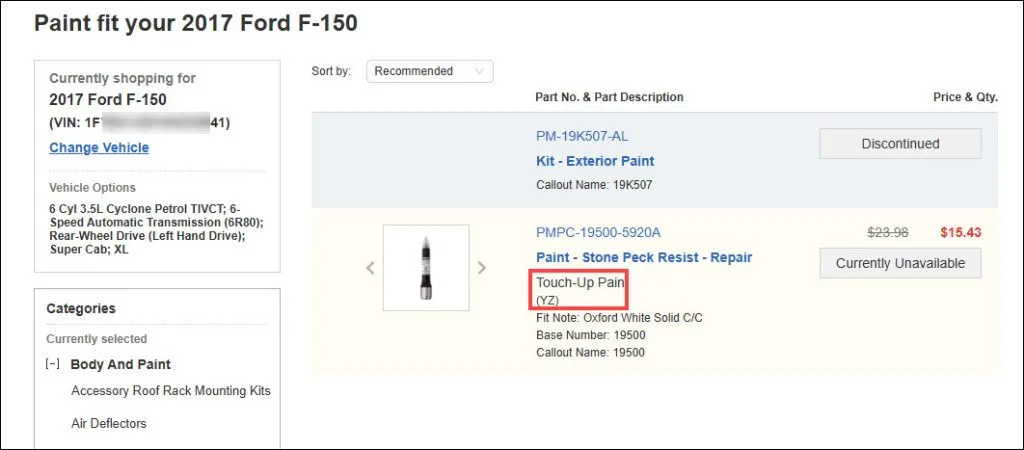
This approach takes a bit of digging, though. For a more direct option with more comprehensive information, try a dedicated VIN decoder.
2. Use a VIN decoder
There are plenty of VIN decoders available, but not all of them can provide the same level of detail. Many popular options, like CARFAX and AutoCheck, provide much vehicle information, but often leave out the paint code.
So, to save you the hassle, we’ve tried several options and found some decoders that are actually helpful for finding those specific details.
Bumper
Bumper is a handy tool for looking up vehicle specs, especially things like paint codes. We compared it with several other options and found it could provide more detailed OEM information, likely thanks to its partnerships with various car manufacturers.
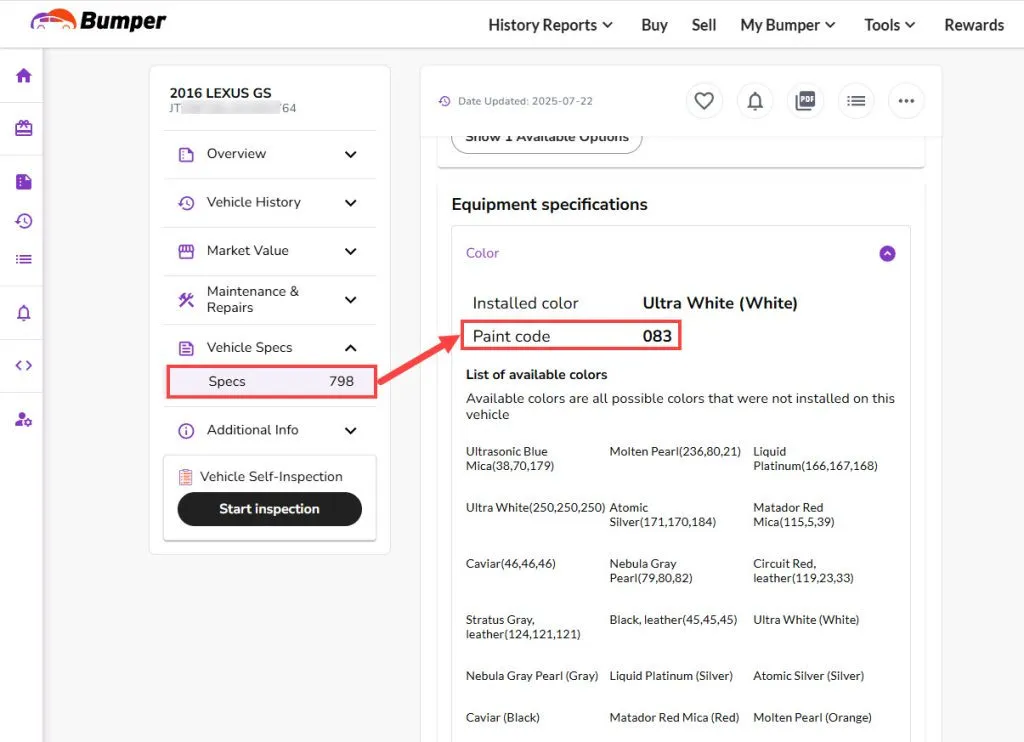
Beyond just specs, Bumper also offers comprehensive vehicle history reports, covering everything from accidents1, damage, number of previous owners, to titles. Note that it’s a subscription service, but it allows for multiple searches, which is great if you’re planning on looking up or comparing several vehicles.
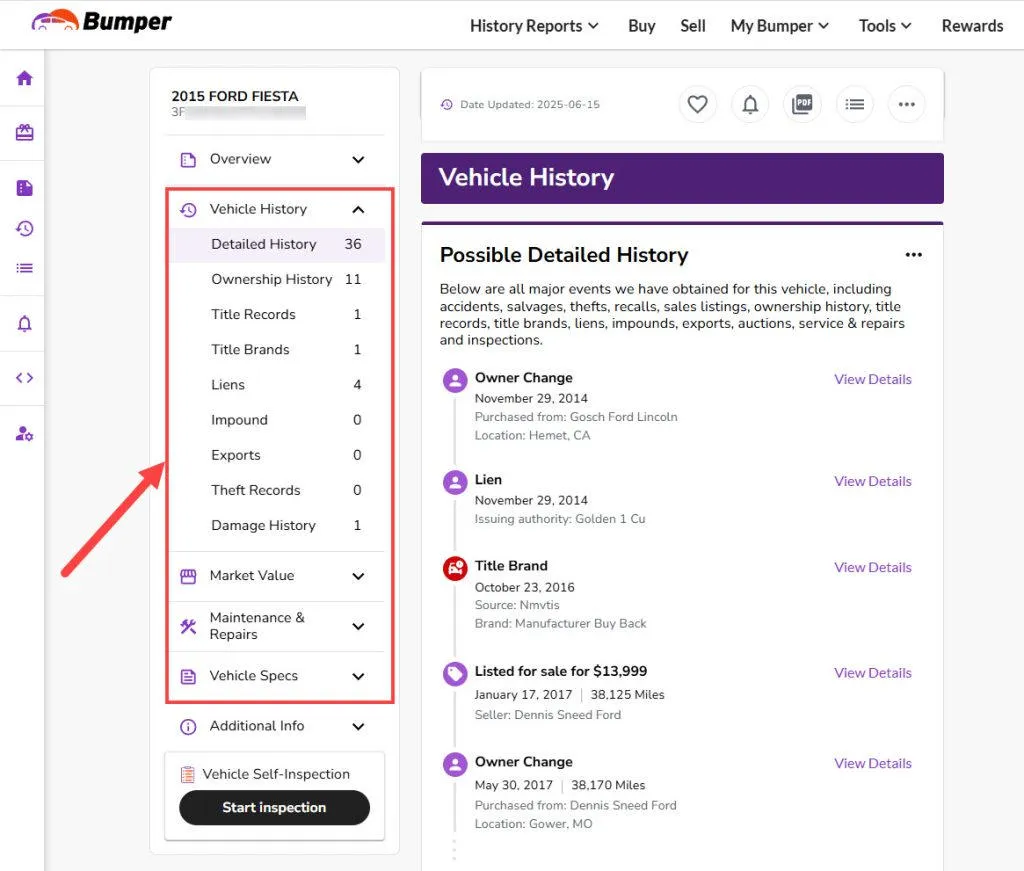
Alternative
Some VIN decoders, like Decode This, can give you a list of possible color names for your car model, but they won’t give you the precise paint code. You’ll need to compare the listed colors to your car’s actual color to find the correct match.
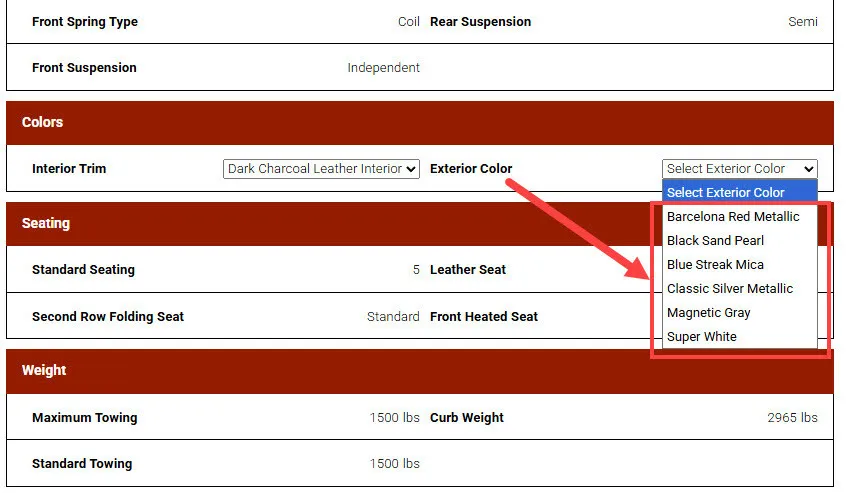
This is a free alternative if you’re not ready to pay for a vehicle information service. But remember that its data sources aren’t as comprehensive as Bumper’s, so there’s a greater chance you might not find what you’re looking for.
💡How to find the corresponding paint code of a color name?
Once you have the color name, you can usually locate the paint code with a quick Google search. Simply search for the make of your car along with the color name.
For example, “Toyota Blue Flame Pearl paint code”. You should find matching results showing the code (in this case, 8W9). Always double-check the color against your actual vehicle, just to be sure.
3. Search by year & make
Sometimes, a simple search by the year and make of your vehicle can quickly find its possible factory paint colors. Websites that sell touch-up paint are particularly helpful for this.
Among them, we found PaintScratch to be very helpful. Just select the year, make, and model of your vehicle, and it can tell you the corresponding factory colors.
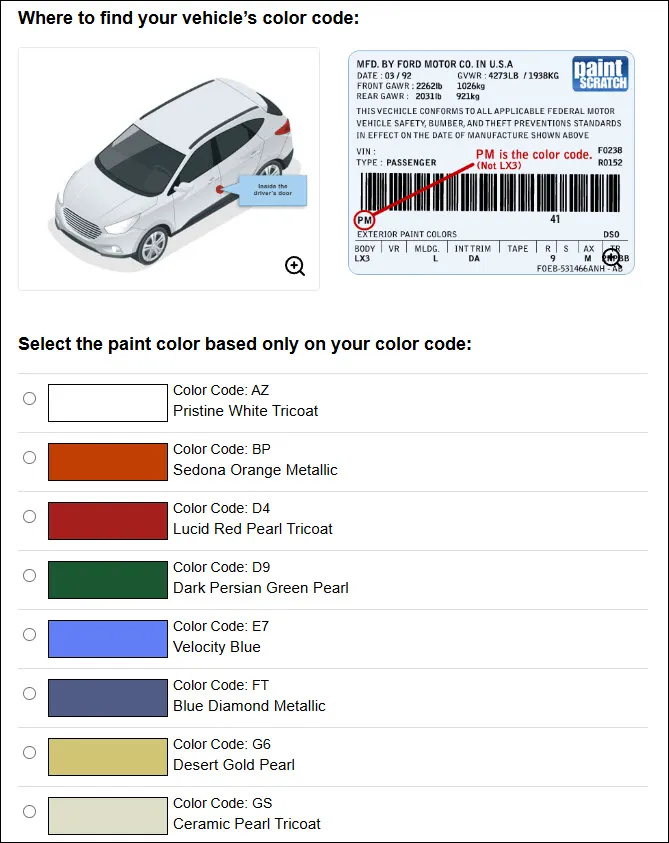
You can then compare these colors to your car to pinpoint the right one. PaintScratch also helpfully shows you where to find the actual paint code on your vehicle and what it should look like.
Just be aware that some car models have very similar colors, so double-checking with other identifiers, like the color name, is always a good idea.
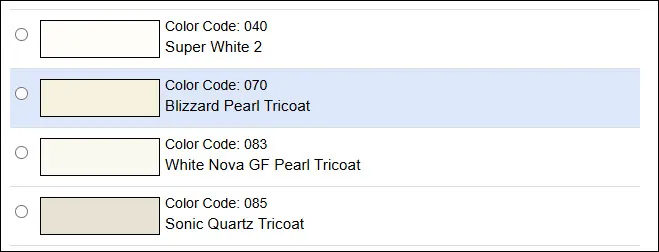
4. Refer to the window sticker
Your car’s original window sticker is a treasure trove of factory details, including its original color name. If you’ve lost your original window sticker, you can often get a digital copy online using your VIN.
Several websites offer access to window stickers, and a good free option is CarEdge. Here’s how to use it:
- Sign up for an account with your email address.
- Enter your car’s VIN to retrieve your window sticker.
- Look for the “Exterior” or “Color/CLR” section to see the color name.
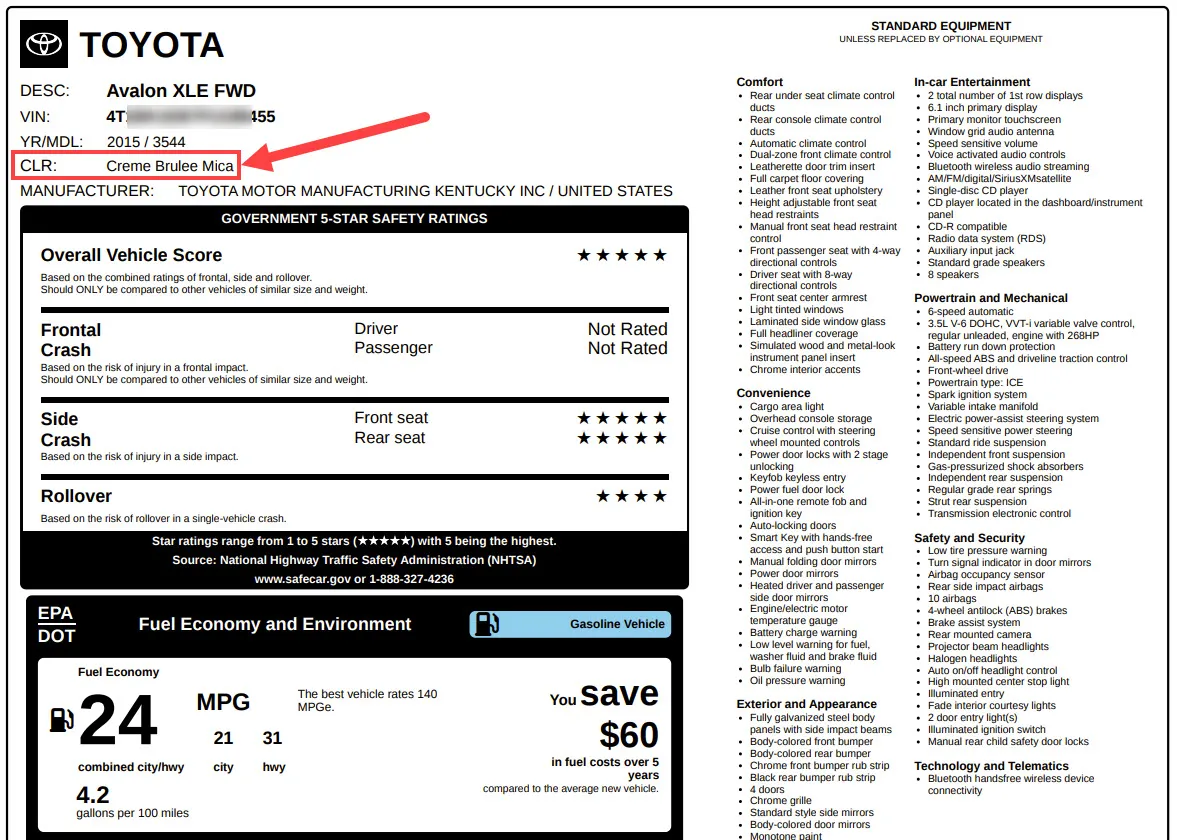
Note that the sticker provides the color’s marketing name (e.g., Sizzling Crimson Mica), not the actual paint code needed for touch-up paint. You can learn how to find the paint code from the name here.
5. Find it directly from the car/documents
If you currently have access to the vehicle or its attached documents, you can try locating the paint code directly from them. That’s the easiest way.
Find paint code from the vehicle
⭐ 1. Doorjamb
The most common spot for a car’s paint code is the driver’s side doorjamb, so that’s a good place to start. If it’s not there, try checking the other doorjambs too.
Commonly found on: Chevrolet, Toyota, Ford, Hyundai, Honda, Subaru, Tesla, Mazda, BMW, Mercedes-Benz, Volvo.
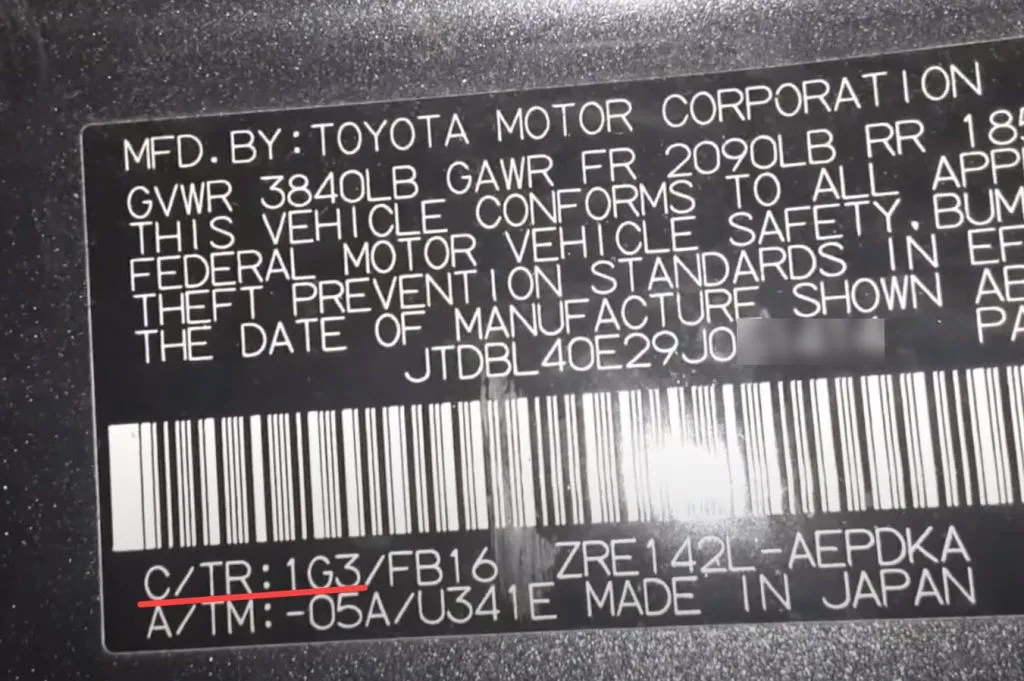
2. Door
Open on the driver’s side door. But still, you can also check other doors.
Commonly found on: Ford, Nissan, Jeep.
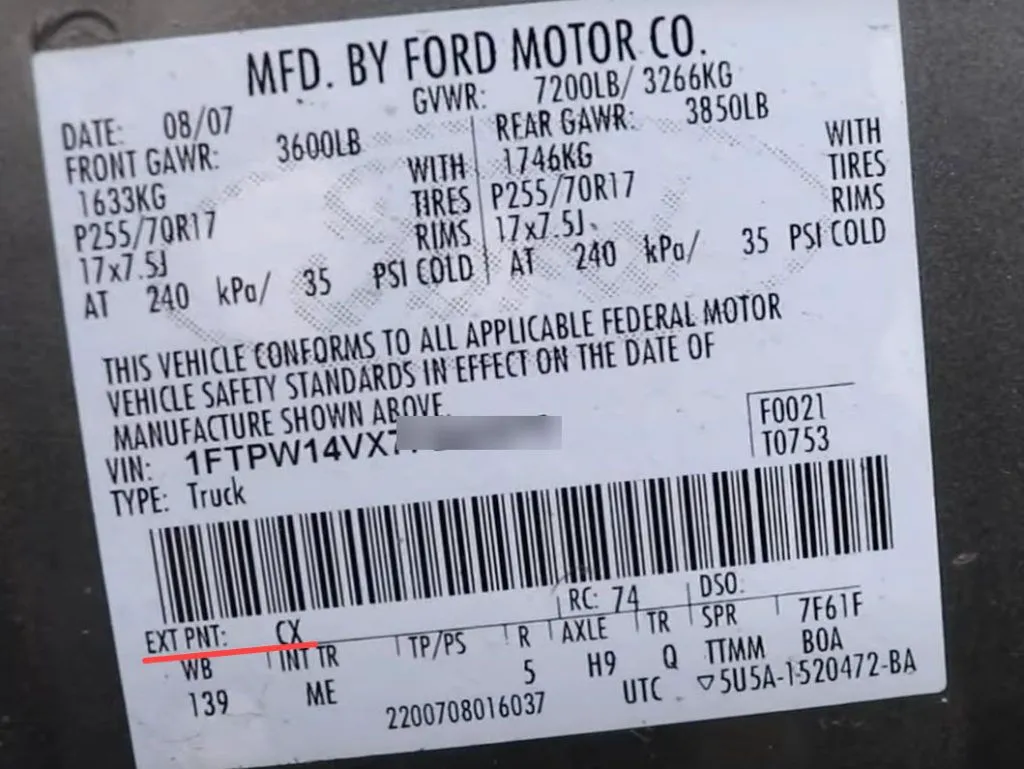
3. Under the hood
Some car manufacturers put the paint code under the hood. Frequent spots include underneath the hood, on the strut tower, or near the fenders.
Commonly found on: BMW, Subaru, Volvo.

4. Trunk
You might also find the paint code in the car trunk. To be specific, near the spare tire or under the trunk floor covering.
Commonly found on: Volkswagen
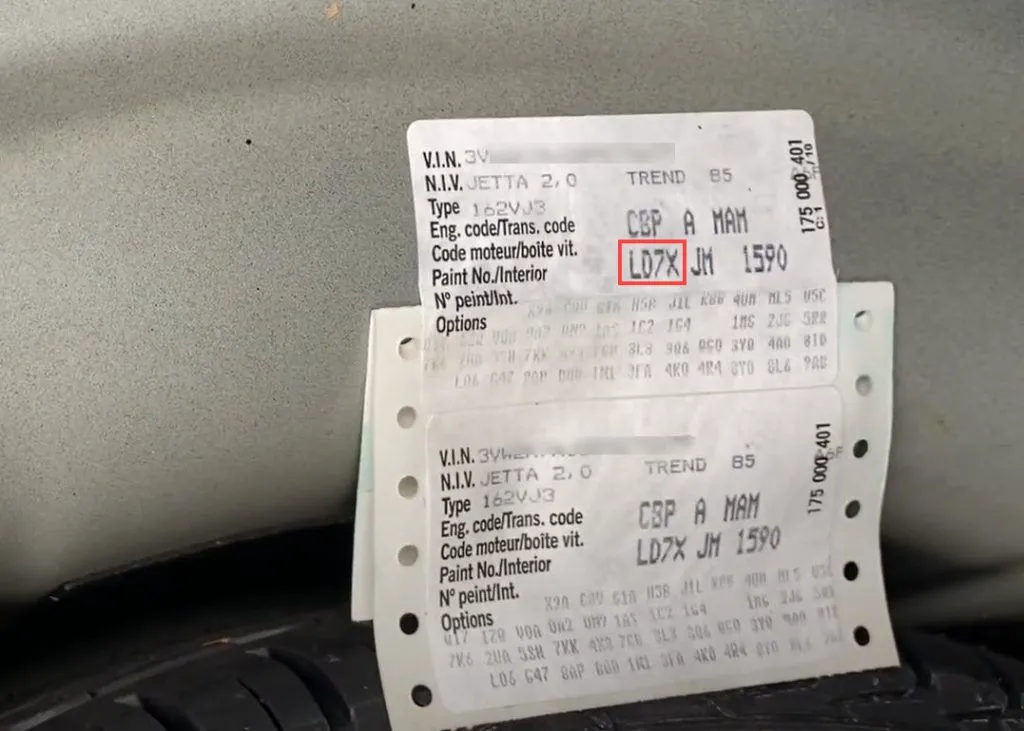
5. Glove box
The glove box at the front passenger’s seat is another location where the paint code might be spotted.
Commonly found on: Chevrolet
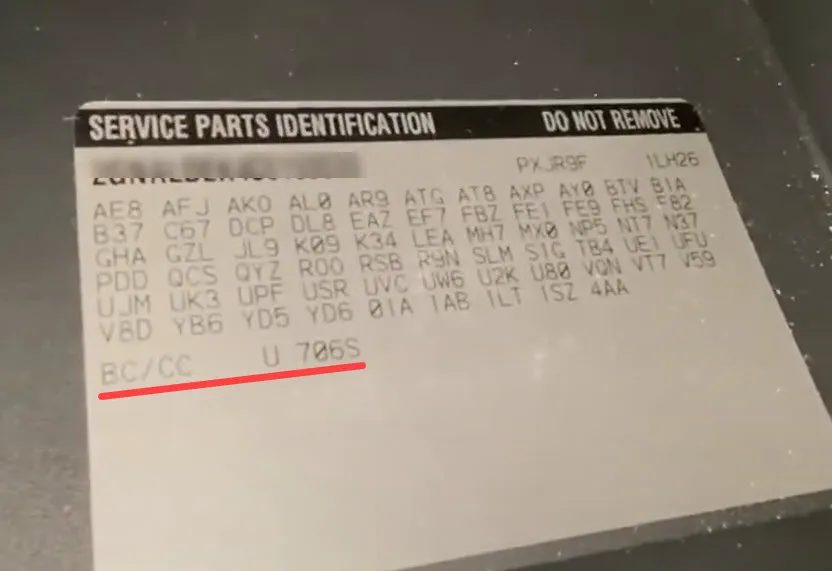
You should know that every car manufacturer might put their paint code at different spots. Even within the same brand, it can move around depending on the model.
Besides, while some codes are clearly labeled, like “Paint”, “EXT PNT”, or “Color Code”, others are just a clutter of numbers and letters. So it’s a good idea to look up the exact location for your car model and see what it looks like (the formats) before you start searching.
How do car manufacturers name their paint codes (on the sticker)?
Chevrolet: BC/CC, or no clear label
Toyota: C/TR
Ford: EXT PNT
Hyundai: no clear label
Honda: no clear label
Nissan: COLOR
Volkswagen: Paint No., or PAINT
Subaru: Color Code
Tesla: PNT
Mazda: Color Code, or EXT PNT
BMW: no clear label
Mercedes-Benz: no clear label
Volvo: no clear label
Jeep: PNT, or Paint
Find paint code from the documents
If you still have the vehicle’s service book at hand, you can also refer to it for the paint code.
The service book is a booklet that documents all the maintenance performed on a specific vehicle. You should receive it when you buy a new or used car if the previous owner kept it. It’s typically included with the owner’s manual and other important documents.
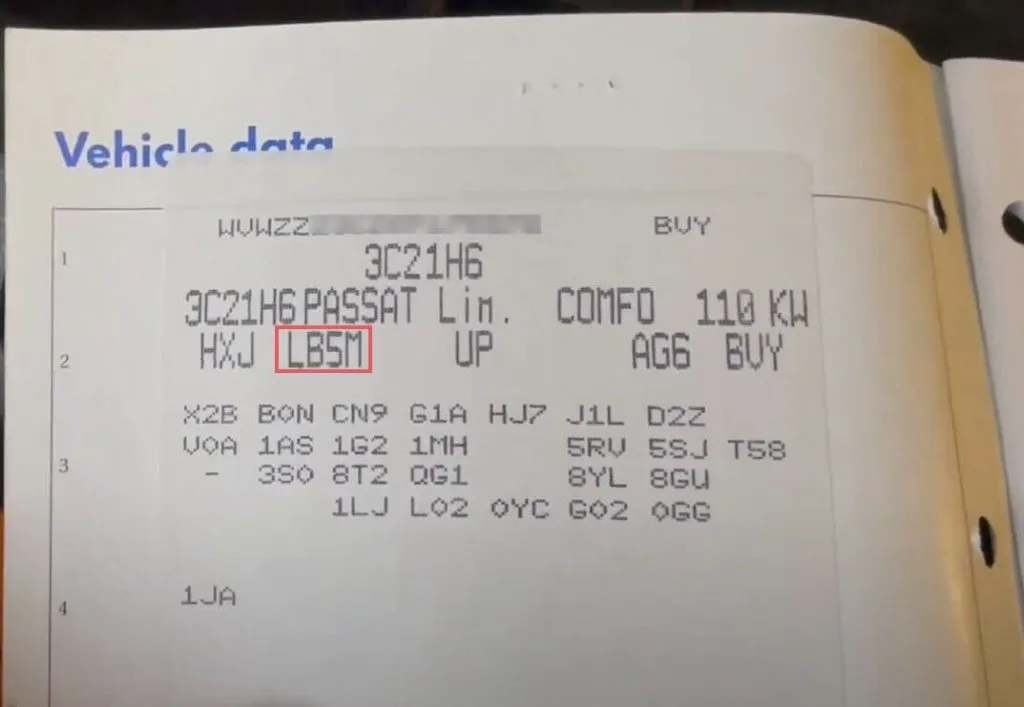
6. Contact the dealership
If you’re having trouble finding your car’s paint code by VIN, contacting a local dealership that sells the same brand can be helpful. This is especially true in a few situations. For example, your bumper is a slightly different shade than the rest of your car, like that other person mentioned2. Or maybe you found a code, but you’re just not sure it’s the right one3. Either way, the dealership can usually sort you out.
You can contact them and ask for the paint code of your car via phone call or email, or just by stepping into the store in person. They’ll likely ask for some details about the car, like the year, make, and VIN. With that, the car dealer can run a check and give you related information.
7. Go to a paint shop
Sometimes, going to a paint shop and having them match the color for you is the best option, especially if:
- Your car’s been repainted a non-factory color, and you can’t find the original code.
- You have a classic car, and the paint information is lost to time.
- The car’s paint has faded due to sun and weather, and using the original code would result in a mismatch.
Most auto paint shops have the tools and expertise to identify your car’s color. They typically use specialized equipment like color chips and electronic color readers to get a precise match. So, if you’re having trouble finding the code yourself, they’re a great resource.
You might also want to know…
1. What’s the difference between a paint code and a color name?
A color name is a descriptive and catchy term that gives you a general idea of the color, like “Silky White” and “Magnetic Gray”. And the paint code is a unique identifier assigned by the manufacturer for an exact color.
Even if two car manufacturers both call a color “Midnight Blue”, the actual color might be slightly different. That’s why you need the paint code – it’s the only way to ensure a perfect match.
2. What if the paint code I found doesn’t fit the color on the car?
If the paint code you found with the VIN doesn’t match your car’s color, there are a few possibilities.
It might have been repainted, or the original paint could have faded over time from sun, wind, and rain. In either case, if you need touch-up paint, it’s best to have a professional color-match the current shade rather than relying on the code.
3. How to find the paint color for a classic car?
Finding the paint color for a classic car can be a real challenge because its records are often patchy, and the original paint might not even be available anymore.
You can try connecting with other owners on online forums dedicated to your car model – they might have valuable insights. If that doesn’t help, a good paint shop specializing in classic cars can often work wonders, matching the color and mixing a perfect batch for you.
Related reading: VIN Lookup for Classic Cars
References
- Bumper reports are based on data available and may not include historical accident records in all states.[↩]
- r/Autobody [deleted]. (2023, March 20). Bumper paint code? [Online forum post]. Reddit. https://www.reddit.com/r/Autobody/comments/11wkscx/bumper_paint_code/[↩]
- General Chat [Ironman]. (2022, December 22). Find paint code from VIN? [Online forum post]. Australian Liberty Owners Club. http://forum.liberty.asn.au/viewtopic.php?f=2&t=37275[↩]

 View all of Arlee Hu's posts.
View all of Arlee Hu's posts.


